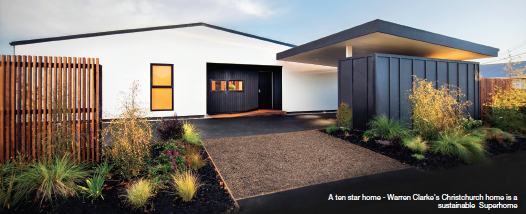Many business professionals start giving back to their chosen career later in life, but that’s not the case for architectural designer Andrew Flack, who runs his own fledgling business but doubles as a tutor at EIT.
Andrew completed the two-year architectural design course at EIT in 2010 and within just seven short years he returned as a tutor, a role that has also enabled him to establish Simply Architecture in Hastings.
Going full circle is a bit of a theme to Andrew’s career. Simply Architecture is based in commercial offices on the corner of Hastings Street and Avenue Road, the same office as his first-ever job out of EIT.
“I’m pretty much sitting in the same place that I sat in when I began working with LHT, an engineering design business.”
As well as working for LHT, Andrew built up his knowledge and experience with Napier-based businesses Structural Concepts and PMA Architects.
All three businesses had more of a focus on commercial building projects but with the booming residential building sector, Andrew was keen to focus on this area of the market.
“I had previously been involved in large-scale commercial design projects and hadn’t done much residential design until we set up the business.
“I always had a strong interest in designing houses and with the boom in this area across Hawke’s Bay and a shortage of architectural designers, I could
see that this was a big opportunity.
“My background in structural form of buildings has also been a benefit as I can take a practical approach when a brief from someone building a new home starts to get a bit more complicated.”
In a little over 18 months in business, Andrew has moved from working at the kitchen table to offices, and has added experienced architectural designer Warren Clarke, two former students Ezra Curd and Scott Peters as draughtsmen (are both the students draughtsmen or just Scott Peters?) and sister-in-law Tenille McCombie as office manager.
The team has worked on a range of residential and commercial projects including new houses, house renovations, some shops in Napier, a church in Tamatea and a funeral home in Gisborne.
Another exciting project is a new building for the YMCA, a partnership they are doing with one of Hawke’s Bay’s leading construction firms, Gemco Group.
Andrew likes a modern approach to building design but also takes design inspiration from some of Hawke’s Bay’s foremost architects Guy Natusch and John Scott.
He also enjoys robust design discussions with Warren, who is a specialist in designing energy-efficient and sustainable houses to the Homestar rating system.
“Warren’s done something that I don’t think I could do, which is design my own home. I would be too critical and I don’t think I would ever finish it.”

Andrew also enjoys giving back to his profession and says it’s been great to teach architectural design at EIT and see graduates go and work for local businesses, including his own.
“Most graduates are pretty keen to live and work in Hawke’s Bay and with there being a wide range of subdivisions coming on to the market, it gives employers confidence to give students a chance to kick start their careers.”
Andrew has teamed up with former Hawke’s Bay architectural designer Warren Clarke, who is based in Christchurch.
